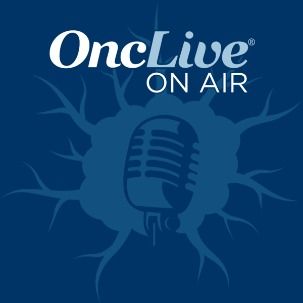Article
NCCN Publishes COVID-19 Safety Recommendations for Oncology Community
Author(s):
The NCCN has published guidelines for ensuring that patients with cancer, care providers, and staff are kept as safe as possible during the COVID-19 crisis.
Robert W. Carlson, MD, CEO of NCCN
To assist with these issues, the National Comprehensive Cancer Network (NCCN) has published guidelines for ensuring that patients with cancer, care providers, and staff are kept as safe as possible during the crisis.1
“The unprecedented challenges we are all facing from the COVID-19 pandemic heighten NCCN's commitment to sharing evidence-based consensus from leading medical experts as rapidly as possible, free-of-charge, to everyone around the world," Robert W. Carlson, MD, chief executive officer, NCCN, said in a press release. "We are doing everything we can to review and share reliable information that will help keep oncology patients, providers, and staff safe under the new reality of increased risk."
The guidelines were published by the NCCN Best Practices Committee in the Journal of the National Comprehensive Cancer Network. The guidelines for patient safety are as follows:
- Prescreen and screen for COVID-19 symptoms and exposure history via telephone calls or digital platforms
- Develop screening clinics to allow for patients with symptoms to be evaluated and tested in a dedicated unit with dedicated staff
- Convert in-person visits to telemedicine visits when possible
- Limited or no visitor policy
- Limit surgeries and procedures to only essential, urgent, or emergent cases
- Consideration of alternative dosing schedule to allow for fewer in-person visits to the cancer center and/or the infusion center
- Switch from infusional therapy to oral oncolytics if equivalent formulation is available
- Transition outpatient care to care-at-home whenever possible (e.g. pump disconnection, administration of growth factors, hormone therapy)
- Increase interval between scans or use biochemical markers in lieu of scans
- Provide resources for wellness and stress management for patients
The following are the guidelines for healthcare worker safety:
- Assure availability and use of appropriate personal protective equipment (PPE) per guidelines
- Create a centralized resource or website to communicate recommendations to the healthcare workers around PPE and workflows
- Implement daily screening tools and/or temperature checks
- Telecommute when possible, with limited onsite staff participating in rotations on a daily basis
- Establish clear stay-at-home and return-to-work guidelines
- Provide resources for wellness and stress management for healthcare workers
“We can continue to provide our patients with effective and compassionate care, without sacrificing the health and safety of our teams, colleagues, and families, by carefully evaluating any emerging research and modifying our treatment approaches accordingly," lead guideline author Pelin Cinar, MD, MS, UCSF Helen Diller Family Comprehensive Cancer Center, stated in the press release.
"People with cancer and their loved ones already go through so much, and now they face new fears around catching COVID-19 or delaying necessary treatment. By sharing these recommendations, we want to reassure the oncology community that there are some aspects of care that we can and will control in order to improve outcomes for people with cancer," added Cinar.
Safety-Focused Ingenuity
Top oncology centers across the country are also inventing new techniques to enhance safety amid the COVID-19 crisis. For example, anesthesiologists at Memorial Sloan Kettering Cancer Center (MSK) have modified the standard single unit protective boxes that are utilized during airway procedures, such as intubation, in infectious patients.2 The modified box is now a 2-piece unit, which, according to the anesthesiologists, provides healthcare providers with improved access if issues occur during airway procedures.
Explaining the benefit of the 2-piece unit in further detail, MSK stated in a press release, “The 1-piece boxes currently used were devised to contain most of the aerosolized virus from spreading into the room, mitigating infectious exposure to the person performing the airway procedure. The MSK redesign adds a significant safety feature so that the upper lid section can be removed by an assistant while keeping the primary operator’s hands and airway equipment in place.”
The MSK inventors have made the specifications for the 2-piece device publicly available.
“We believe our simple modification of going to a 2-piece design will be very helpful in patients with difficult airways,” Grant H. Chen, MD, an anesthesiologist at MSK stated in the press release. “Under normal circumstances around 2 percent of intubations are anticipated to be unexpectedly difficult. However, there have been reports that patients with COVID-19 are presenting with swollen airways, which may dramatically increase difficult intubations.”
The need for ventilatory support in patients has increased dramatically due to hypoxic respiratory failure caused by COVID-19. Protective boxes are increasingly becoming part of standard practice at hospitals across the country to prevent healthcare providers from contracting the aerosolized virus when conducting airway procedures in patients.
“Protecting patients and healthcare providers during this pandemic requires real-time, on-the-ground innovation and information sharing with our colleagues around the nation and world,” Takeshi Irie, MD, PhD, an anesthesiologist at MSK, said in the press release. “We want to get the word out about this critical design change, which may go a long way toward keeping our fellow healthcare providers safe during this public health crisis.”
References
- JNCCN: Improving COVID-19 Safety for Cancer Patients and Healthcare Providers. Published April 9, 2019. https://prn.to/3bYYKXg. Accessed April 9, 2019.
- MSK Redesigns the Protective Boxes Used during Airway Procedures, Change May Help Minimize the Spread of COVID-19 to Healthcare Providers. Published April 9, 2019. https://bit.ly/2XoxihM Accessed April 9, 2019.
Although efforts to “flatten the curve” are showing some signs of hope, the COVID-19 crisis continues to present major challenges to the oncology community.









